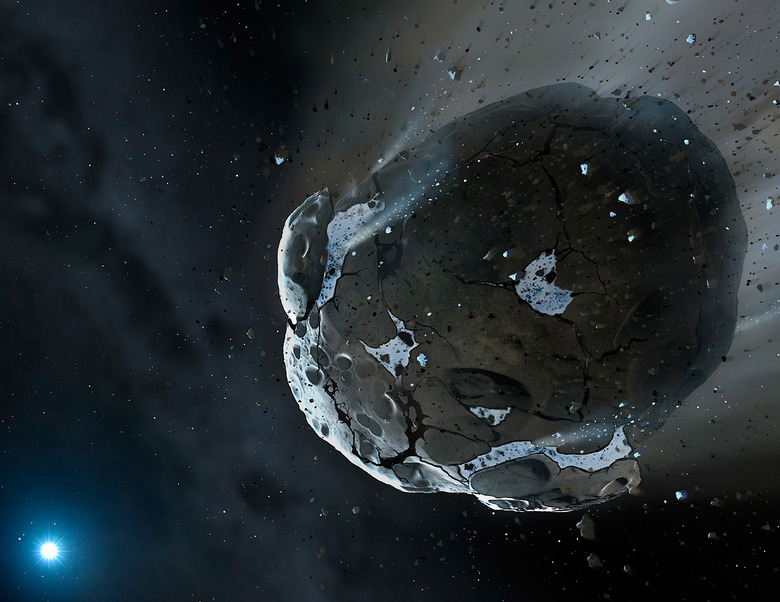A 65-Foot-Long Asteroid Just Sped Past Earth And We Almost Missed It
- Astronomers from the University of Hawaii detected a near-Earth asteroid just as it made its way past our planet.
- The rock, which the scientists estimate measures around 65 feet in length, passed at a distance that is twice that of the Earth to the Moon.
- The asteroid passed by safely this time, but there's a slim chance it could come back around again in 2087.
Space agencies and astronomers around the world do a really, really good job of spotting potentially hazardous space rocks before they appear in Earth's local neighborhood. Much smaller objects are a lot harder to spot from afar, and sometimes they aren't detected until they're right on our doorstep. That was the case with a newly-discovered asteroid labeled 2020 OO1, which made a close flyby of Earth just days ago and was spotted by researchers at the University of Hawaii.
As Hawaii News Now reports, the researchers were using the Univerity of Hawaii's Pan-STARRS1 telescope, which is skilled at spotting objects as they approach Earth. The asteroid did not prove to be a threat this time around, but that could change in the future.
The researchers that spotted the asteroid released a brief animation showing the asteroid as they detected it. It's pretty easy to spot already, but there's also a pink circle around it just in case you missed it.

The asteroid didn't come super close to Earth, and at its closest approach it was approximately twice the distance from Earth as the Moon is. That's a healthy, safe gap, so there wasn't much reason to worry about an impact. At around 65 feet in length, the asteroid isn't exactly the kind of "planet-killer" space rock that we'd see in a sci-fi disaster flick, but if it were to enter Earth's atmosphere above a populated area it could do some damage.
The best example of the kind of damage a rock like this could do is the Chelyabinsk meteor that exploded over Russia back in 2013. The rock entered Earth's atmosphere and then exploded due to the pressure and friction it encountered. It was estimated to be around 66 feet in length, which is almost exactly the same size as the space rock spotted by the researchers in Hawaii.
Nobody was killed by the blast, but nearly 1,500 people were injured, and the shockwave of the explosion caused extensive damage to buildings. Windows were shattered and even some roofs collapsed as the blast reached the ground. Over 7,000 structures sustained damage from the event.
The good news is that the asteroid safely passed by Earth this time, but the slightly less-good-news is that, based on the trajectory of the object, scientists predict that it has a tiny chance of coming back around and hitting our planet in 2087. That forecast could change dramatically, however, so there's little reason to worry about it now.
